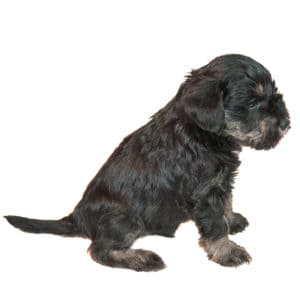 Cute, fluffy, and ever-so-cuddly, Pomeranians have been capturing hearts since the 1700s. They’ve long been a favorite of small-breed fans, and always make up for their small size with lots of affection. If a little Pomeranian sweetheart has just joined your family, you’re in the perfect place. We’ll explore the best dog food for Pomeranians with you and review their pros and cons in our hand-picked reviews.Let’s go!
Cute, fluffy, and ever-so-cuddly, Pomeranians have been capturing hearts since the 1700s. They’ve long been a favorite of small-breed fans, and always make up for their small size with lots of affection. If a little Pomeranian sweetheart has just joined your family, you’re in the perfect place. We’ll explore the best dog food for Pomeranians with you and review their pros and cons in our hand-picked reviews.Let’s go!
Quick Review: Top-3 Dog Foods For Pomeranians
The Best Food For Pomeranians: What’s Special About It?
Poms are some of the smallest, shortest, and lightest dogs on the USA’s list of most popular breeds. As adults, they rarely exceed 8 pounds fully grown, and don’t tend to get much taller than 29cm. They are ideal house pets and don’t eat vast quantities of food, making them perfect companions for brand new owners.
When it comes to the best food for Pomeranians, their tiny jaws and high energy requirements are perfectly suited to most small-breed dog foods. Compared with large-breed (or even all-breed) dog food formulas, these offer:
- A smaller kibble size for their little teeth;
- Higher protein and fat levels; and
- Higher calorie count to optimize their metabolism.
With this background info, you’re already halfway to finding the best Pomeranian food out there. But what’s right for one Pom won’t always be ideal for your own dog, and you’ll also need to consider your little pooch’s age, weight, and the amount of exercise he’s getting.
In this next section, we’ll look at exactly that.
Inside the Best Food For Pomeranians
 The best dog food for Pomeranian puppy dogs must satisfy all his nutritional requirements – for growth if he’s a puppy, and for maintenance, if he’s already fully grown. It should therefore be:
The best dog food for Pomeranian puppy dogs must satisfy all his nutritional requirements – for growth if he’s a puppy, and for maintenance, if he’s already fully grown. It should therefore be:
- A rich source of lean, healthy, animal proteins (at least 23% for the best Pomeranian puppy food and 19% for adults);
- Considerably higher in lipids and fat than a large-breed kibble;
- Full of AAFCO-recommended minerals (e.g. copper, iron, selenium, etc) and vitamins (e.g. Vitamin B, D, K); and
- A good source of dietary, digestive fiber.
You will find plenty of healthy small-breed dog food recipes that also go a bit further for your Pom’s health. Many puppy formulas contain fish oil, for instance, which provides your little sidekick with both DHA and with glucosamine. Some include prebiotics, for smoother and easier digestion, and others contain fruit and veggie inclusions for an immune system boost.
Finding a dog food with added glucosamine and fish oil is a plus for your Pomeranian, as they are prone to joint complications as they age. They can also experience dry skin, which can be soothed by fish oil additives in their diet.
When you find one or more of these nutritious features in a recipe, you’re another step closer to the best possible kibble for your Pom!
What is the Best Dog Food for Pomeranians, Wet or Dry?

Whether your Pom prefers wet or dry food will be completely a matter of personal taste. Some Poms adore canned, soft pates and stews, while others will enjoy the crunch of delicious dry biscuits.
One thing worth noting is that Poms have quite narrow jaws, which occasionally leads to dental complications such as tooth loss or overcrowding. Poms with less than optimal dental health may find soft food much easier to bite and chew, and the same goes for little puppies. When they reach a later stage in their lives, too, such problems may be a little bit worse.
If this describes your pet, we recommend you try mixing your Pom’s canned food and his dry kibble together so that he finds it easier to eat.
How much should you feed an adult Pomeranian?
A huge part of a well balanced diet comes down to the amount and frequency in which you’re feeding your Pomeranian. Even the most nutritious food cannot do your Pomeranian justice if you are not following recommended feeding guidelines. So how much should you feed an adult Pomeranian?
For adult Pomeranians 1 year and older, they should be eating ¼ – ½ of a cup per pound of body weight depending on how active your Pom is. So for example, if your Pomeranian is 8 pounds, they should be eating 2-4 cups total per day. If your Pomeranian is not as active, then remain closer to 2 cups. If your Pomeranian is incredibly active, you may need to stay closer to the 4 cups per day range. Ideally, you should break this into at least 2 feedings a day.
How much should you feed a Pomeranian puppy?
Since Pomeranians puppies require more energy and nourishment as they grow, they will need their feeding schedule to reflect that. Puppies will need to be fed more often throughout the day, especially when dealing with a smaller breed of dog like the Pomeranian. Due to their small size, they are susceptible to experiencing hypoglycemia (low blood sugar). Because of this, you will need to feed them anywhere from 4-6 times a day.
A Pomeranian puppy up to 1 year of age should eat 1/2 of a cup of puppy food per pound each day. So if your Pomeranian puppy is 3 pounds, they should eat 1.5 cups per day, divided between at least 4 meals throughout the day.
If your puppy seems absolutely ravenous at meal time, then you can increase this amount a bit. As long as you are offering a minimum of ½ a cup per day per pound, you can tweak the amount a bit if needed.
The Best Pomeranian Food: Brands We Love
- Halo: A reliable brand to turn to when you’re after digestible, healthy ingredients that have been minimally processed;
- Nutrisource: A solid safety record and very nutritious recipes make NutriSource a top contender for the best Pomeranian food we could find;
- Instinct Raw Boost: Known for their special mixes of uncooked and conventional kibble, Instinct crafts Pom food with an extra nutrient kick;
- Wellness: One of our all-time favorite dog food brands, Wellness does grain-free recipes very well. They make a toy dog recipe that’s perfect for small Pomeranian mouths.
- Blue Wilderness: Protein-packed Blue Wilderness foods always contain very good quality ingredients and are never artificially preserved; and
- Bil Jac: A respected producer of meat-rich, high-quality dog food, Bil Jac makes a tasty chicken recipe with all the protein that your sweet Pom requires;
- Royal Canin: Royal Canin focuses on meeting the nutritional needs of small dog breeds specifically in this diet, while giving them a tasty diet they love.
It’s time for our in-depth reviews of the healthiest, most highly recommended Pomeranian foods out there!
The Best Dog Food For Pomeranian Puppy
- Halo Natural Dry Dog Food, Small Breed
Pros
- Only natural colors have been used in this recipe, and the same applies to preserving agents and flavors;
- There are zero unhealthy meat meals, and whole, non-factory farmed chicken is the key meat ingredient;
- This is designed for maximum absorption of the main nutrients in this kibble;
- Includes lots of delicious, natural fiber; and
- It’s perfectly sized for your Pom puppy’s mouth!
Cons
- None!
- NutriSource Small Breed Puppy Food
Pros
- There are no meat by-products to be found in this healthy, high-quality chicken puppy formula;
- It’s balanced, meeting all your puppy’s nutritional needs and helping him grow up strong;
- Offers your Pom Omegas 3 and 6 from fish meal, so that fluffy little coat can shine;
- Supplemented with prebiotics as well as probiotics, it’s very soft on your puppy’s gut; and
- Gives that growing dog a nice 32% protein.
Cons
- Doesn’t provide your puppy with much vegetable fiber.
- Instinct Raw Boost Grain Free Recipe Natural Dry Dog Food
Pros
- With 34% protein and 15.5% fat, this is optimally balanced for your little Pom’s growth;
- Includes glucosamine, which has incredible benefits for preventing joint complications;
- Among the quality proteins in here, you’ll find salmon meal, chicken meal, and real turkey;
- Contains coconut oil, liver, pumpkin seeds, and other wholesome, nutritious superfoods; and
- Good bacteria are added for easy breakdown and dogs with sensitive tummies.
Cons
- Some owners may prefer whole meat – rather than meat meal – at the top of the ingredients list.
Best Dog Food For Pomeranian Adults
- Wellness Complete Health Natural Dry Small Breed Dog Food
Pros
- Protein from both peas and boneless chicken assist in maintaining lean muscle;
- Contains nutritious sources of slow-release energy, such as 14% fat and low-GI veggies;
- Brown ground rice makes for an easily digestible dinner;
- With 26% protein, your grown Pom will be getting all he needs; and
- Superfoods full of antioxidants will give your pet a lovely immune system boost.
Cons
- This contains grains, making it an unhealthy choice for gluten-averse pooches.
- Blue Wilderness Toy Breed Formula
Pros
- Very high in protein, this recipe has egg, chicken, fish meal, and peas, among other ingredients;
- Provides 16% fat, a good figure for sustained energy release;
- That fish meal also gives your Pom Omega fats for his beautiful coat and supple skin;
- Uses barley grass, kelp, and other fiber-rich inclusions to boost digestion; and
- As a respected brand, Blue Wilderness has a great safety record.
Cons
- Not suitable for adult dogs on a limited ingredient diet.
- Bil Jac Small Breed Select Dry Dog Food
Pros
- This formula’s #1 ingredient is whole, succulent chicken;
- Easy to swallow and chew, small-breed owners highly recommend this kibble size for little dogs;
- Uses sweet potato and oatmeal as dietary fiber to ease up your dog’s digestion;
- It’s balanced, holistic, and full of nice fruits like apple and cranberries; and
- At 406 kCal/cup, it’s ideal for the speedy metabolisms of smaller canines.
Cons
- Contains corn meal.
- Royal Canin X-Small Adult Dry Food
Pros
- Added DHA and EPA for skin and coat health.
- Small kibbles that are easy for a Pomeranian to consume.
- Kibbles help to prevent tartar build up.
- Added fiber for proper digestion.
Cons
- This diet does contain chicken, so dogs with poultry allergies may not be able to enjoy.
FAQ
What is ‘raw food’ and ‘raw feeding’ exactly?
This is a great question, with a pleasantly straightforward answer! Simply put, raw food describes an uncooked doggy diet of animal meat, organs, and bones. It also can cover uncooked vegetables, egg, or fruit – basically any food that has not been cooked. Raw feeding is sometimes described as a trend or a fad by owners, but you don’t have to feed your dog raw food exclusively for him to be on a raw diet. If you want to get technical about it, throwing your dog a bone can be considered raw feeding!
In the dog food market, you will often find raw food in frozen form; due to the very short shelf-life of raw food, you will rarely find fresh meat in pet stores or on the internet. One example of raw food is Orijen’s freeze-dried range of meats, and another is the frozen kibble bits in the Instinct Pomeranian food above.
Are Pomeranians usually considered picky eaters?
Yes, they are! This is a common observation among Pom owners, but it doesn’t necessarily apply to all Pomeranians. A lot of the time, this problem can be solved by changing one of a few things. Try these tips:
- Check that your Pom’s food is appropriate for his size. Most dogs will be put off after a while if their food is a struggle to pick up, chew, or swallow. With small breeds such as Pomeranians, it’s especially important to make sure that his kibble doesn’t also pose a choking hazard.
- Your Pom may simply be bored with eating the same flavor kibble each and every day. A good thing to do in this instance would be trying out one of the other Pomeranian foods we have recommended. Based on his or her age and life stage, you will find more than one great option to pick from above.
- Reconsider the amount of ‘non-meal’ food your Pom is eating. Too many snacks, excess scraps, or sneaky eating from another pet’s bowl may be at the root of his lost appetite. Don’t forget to check with the other members of your household, as someone else may be doing the sneaky feeding!
Helpful Links
Last update on 2025-12-15 / Affiliate links / Images from Amazon Product Advertising API




